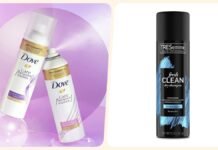
Hair dye can pose certain health risks, particularly with long-term or frequent use. Some studies have linked the use of hair dyes with an increased risk of certain types of cancer, such as blood cancers (leukemias and lymphomas), bladder cancer, and breast cancer. However, the evidence is not conclusive, and more research is needed to fully understand the risks. It’s also important to note that hair dye formulations have changed over time, with many manufacturers removing or replacing chemicals known to cause cancer in animals.
Regarding the types of hair colors available in the market, there are several, including:
- Temporary dyes: These cover the surface of the hair but don’t penetrate the hair shaft and generally last for 1 to 2 washings.
- Semi-permanent dyes: These penetrate into the hair shaft and typically last for 5 to 10 washings.
- Permanent (oxidative) dyes: These cause lasting chemical changes in the hair shaft and are the most popular because the color changes last until the hair is replaced by new growth.
When choosing a hair dye, it’s advisable to opt for products that are labeled as “ammonia-free,” “PPD-free,” “hypoallergenic,” or “organic and plant-based” as these are generally considered safer, especially for those with sensitive skin or allergies.
As for precautions, here are some important ones to consider:
- Patch Test: Always do a patch test before using a new hair dye to check for allergic reactions.
- Follow Instructions: Carefully follow the directions on the hair dye package.
- Protective Gear: Wear gloves when applying hair dye to protect your skin.
- Ventilation: Ensure good ventilation to avoid inhaling fumes.
- Avoid Sensitive Areas: Never dye your eyebrows or eyelashes, as this can be dangerous and is not approved by the FDA.
- Rinse Thoroughly: After dyeing, rinse your scalp well with water.
- Keep Out of Reach of Children: Hair dye products should be kept away from children.
Remember, if you have concerns about the safety of hair dye, it’s best to consult with a healthcare professional or a dermatologist. They can provide personalized advice based on your health history and sensitivities.
Natural alternatives to chemical hair dyes are gaining popularity for those looking to avoid synthetic chemicals. Here are some options:
- Henna: Derived from the leaves of the henna plant, it’s one of the most popular natural hair dyes. It can give your hair a reddish-orange to brownish color.
- Indigo: Often used in combination with henna, indigo can create shades from blue-black to brown.
- Cassia: Also known as “neutral henna,” it’s used to add shine and a slight golden tint to light-colored hair.
- Beet and Carrot Juice: These can add red tints to your hair. The intensity of the color depends on the original color of your hair and how long you leave the juice in.
- Coffee: A strong brewed coffee can be used as a rinse to darken hair and add shine.
- Chamomile Tea: Known to lighten hair over time, especially when used in conjunction with lemon juice and sunlight.
- Lemon Juice: Applied and exposed to sunlight, it can gradually lighten hair, giving it natural highlights.

Remember, natural dyes generally don’t last as long as chemical dyes and may not provide as dramatic a change in color. They are also less predictable, so it’s a good idea to test a small section of hair first. Additionally, even natural ingredients can cause allergic reactions in some people, so a patch test is recommended before full application.



















































